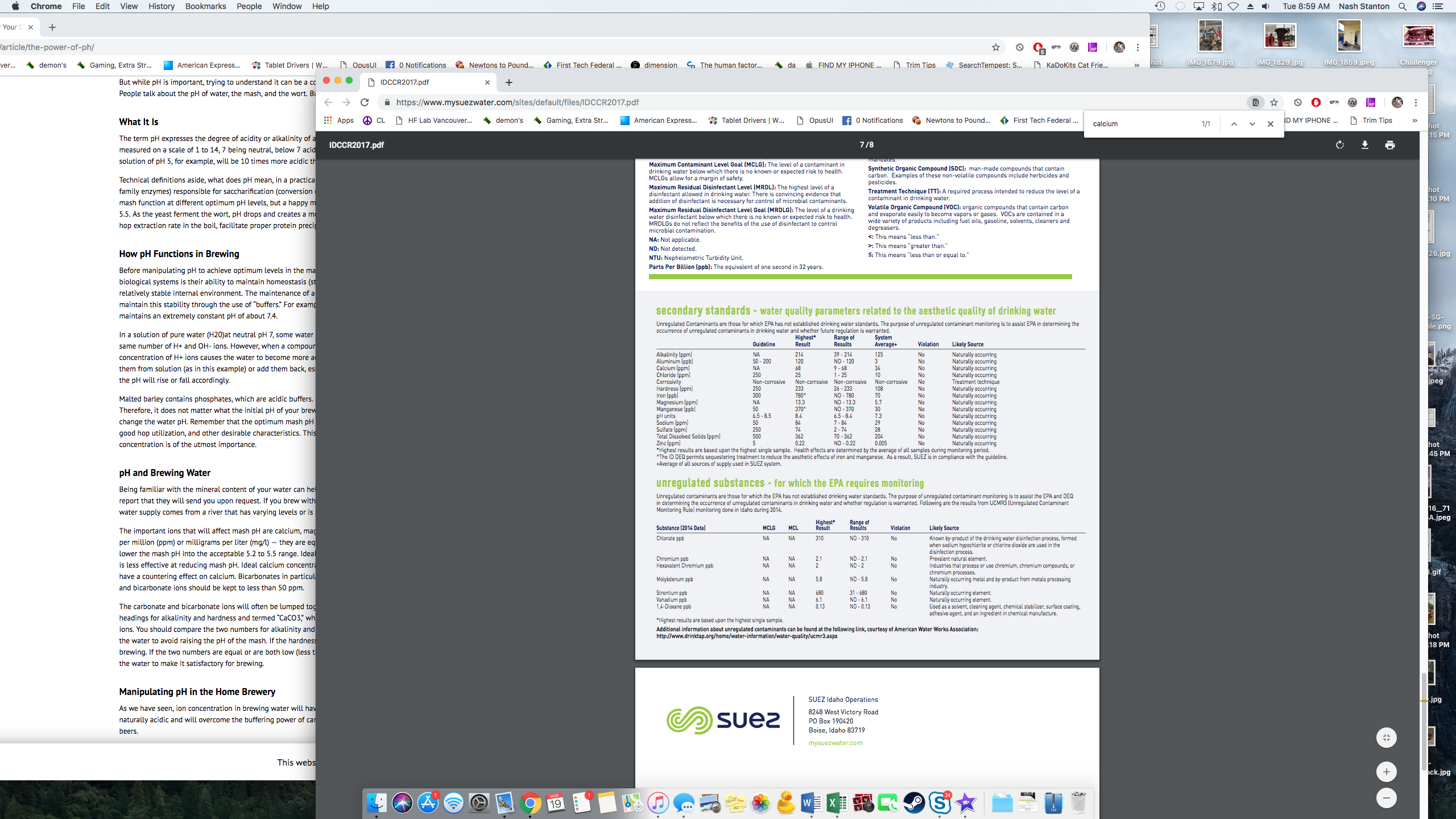fendersrule
Well-Known Member
- Joined
- Oct 11, 2018
- Messages
- 703
- Reaction score
- 342
I've been brewing non-stop...done 6 double batches thus far plus about 10 gallons of cider. Efficiency for beer has been slightly lacking at 55-60%, but likely due because I "rinse" grains from muslin socks and I mill pretty coarse (corona mill). This is all about to change soon due to my new cereal killer mill (set at .023"), and my new BIAB setup which doesn't restrict the grains from flowing. I bet I'd get an easy 70% without trying.
I'd like to think that my water is just fine to brew with....I've received a lot of positive comments on my brew, but I'd like to know what you guys think as the experts. All I can say is that my tap water tastes good.

I'd like to think that my water is just fine to brew with....I've received a lot of positive comments on my brew, but I'd like to know what you guys think as the experts. All I can say is that my tap water tastes good.




























![Craft A Brew - Safale S-04 Dry Yeast - Fermentis - English Ale Dry Yeast - For English and American Ales and Hard Apple Ciders - Ingredients for Home Brewing - Beer Making Supplies - [1 Pack]](https://m.media-amazon.com/images/I/41fVGNh6JfL._SL500_.jpg)





























